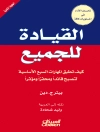An in-depth example of The Agility Factor in action
Becoming Agile: How the SEAM Approach to Management Builds
Adaptability illustrates the process of becoming an agile
organization. Reflecting the principles presented in The Agility
Factor, readers are taken on a real-world journey of
transformation and change. This short-format case study of the
French company Brioche Pasquier highlights how one organization
successfully implemented the principles of agility using the
socio-economic approach to management, detailing each step of the
process and describing how every decision brought the goal closer
within reach. Readers get inside the heads of decision makers to
gain insight into how tough decisions were made, how new,
important, and flexible management tools were implemented, and how
the necessary changes ultimately benefitted both the organization
and the people who made it work. From overarching policy to
day-to-day procedure, the story provides a clear example of how an
agile organization is developed, giving readers a foundation upon
which to implement similar changes in their own organization.
Smart companies understand the importance of agility, but
identifying where and how to initiate those first steps often leads
to paralysis by analysis. This case study allows readers to learn
from an organization that got through the inertia and put the
principles of agility into action, with incredible results.
* Understand how the principles of agility can be implemented
using a specific intervention strategy
* Tailor those principles to suit any organization
* Calculate and convert the ‘hidden costs’ of traditional
organizational design into flexible, value added activities
* Formulate and execute an actionable agility strategy
Big changes require a deep understanding of the problem at hand,
and a viable plan for steering the organization in a better
direction. By seeing how it’s been done before, organizations can
take a proven approach and tailor it to their specific needs. For
those tasked with formulating the agility strategy, Becoming
Agile: How the SEAM Approach to Management Builds Adaptability
provides invaluable insight.
Table des matières
Foreword vii
Preface xiii
Acknowledgments xv
1 One Vision, Two Perspectives: Agility and the Socio-Economic Organization 1
Purpose of the Book 4
Agility and Performance 8
A Socio?]Economic Theory of Organizations 23
Overview of the Book 32
2 The Beginnings of Agility at Brioche Pasquier 37
BPG and the SEAM Methodology 40
The Initial Improvement Process at BPG 44
BPG’s Agility 66
3 The Brioche Pasquier Group Goes Global 75
Chapter Overview 77
Act 1: Internationalizing the Sales Function 80
Act 2: From International Sales to International Production 82
Act 3: From International to Global 89
Assessing BPG’s Agility 96
Summary 112
4 Implementing Agility and SEAM: Recommendations and Implications 113
A Comparison and Integration of Agility and SEAM 113
An Agility Implementation Framework 117
Reflections on Becoming Agile 134
Conclusion 141
About the Authors 145
The Research Sponsor Organizations 149
The Center for Effective Organizations (CEO) 149
The Institute for Socio-Economic Organization Research (ISEOR) 150
The Center for Leadership and Effective Organizations (CLEO) 151
Index 153
A propos de l’auteur
CHRISTOPHER G. WORLEY is Professor of Strategy at the NEOMA Business School in France and the Strategy Director for the Center for Leadership and Organization Effectiveness. He is also a Senior Research Scientist at USC’s Center for Effective Organizations.
VÉRONIQUE ZARDET is Professor of Management at IAE Lyon, University Jean Moulin, France and Director of the ISEOR Research Center at University of Lyon.
MARC BONNET is Professor of Management at IAE Lyon, University Jean Moulin, France and Deputy Director of the ISEOR Research Center.
AMANDINE SAVALL is a Ph D researcher at ISEOR, Lyon, France and examines management of international practices in family-owned businesses.












